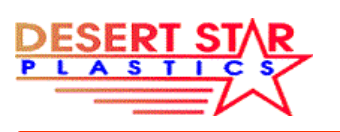It is also: process flowchart, process flow diagram.
A flowchart is a picture of the separate steps of a process in sequential order.
Elements that may be included are: sequence of actions, materials or services entering or leaving the process (inputs and outputs), decisions that must be made, people who become involved, time involved at each step and/or process measurements.
The process described can be anything: a manufacturing process, an administrative or service process, a project plan. This is a generic tool that can be adapted for a wide variety of purposes.
When to Use a Flowchart
- To develop understanding of how a process is done.
- To study a process for improvement.
- To communicate to others how a process is done.
- When better communication is needed between people involved with the same process.(example: Fast food industry: due to the high level of employee turnover, the chart is a very important element to guarantee the consistency)
- To document a process.( example: Fast food industry: the final product need to be the same in every location)
- When planning a project.
Flowchart Basic Procedure
Materials needed: sticky notes or cards, a large piece of flipchart paper or newsprint, marking pens.
- Define the process to be diagrammed. Write its title at the top of the work surface.
- Discuss and decide on the boundaries of your process: Where or when does the process start? Where or when does it end? Discuss and decide on the level of detail to be included in the diagram.
- Brainstorm the activities that take place. Write each on a card or sticky note. Sequence is not important at this point, although thinking in sequence may help people remember all the steps.
- Arrange the activities in proper sequence.
- When all activities are included and everyone agrees that the sequence is correct, draw arrows to show the flow of the process.
- Review the flowchart with others involved in the process (workers, supervisors, suppliers, customers) to see if they agree that the process is drawn accurately.
Flowchart Considerations
- Don’t worry too much about drawing the flowchart the “right way.” The right way is the way that helps those involved understand the process.
- Identify and involve in the flowcharting process all key people involved with the process. This includes those who do the work in the process: suppliers, customers and supervisors. Involve them in the actual flowcharting sessions by interviewing them before the sessions and/or by showing them the developing flowchart between work sessions and obtaining their feedback.
- Do not assign a “technical expert” to draw the flowchart. People who actually perform the process should do it.
- Computer software is available for drawing flowcharts. Software is useful for drawing a neat final diagram, but the method given here works better for the messy initial stages of creating the flowchart.
How to display the process flowchart?
Here is one of the biggest bottle necks in the day to day management. These flowcharts are taped on a wall, removed, retaped, until they get tears apart, stain or lost, And we do another one.
Purpose? Wasting time and money. If the chart is not at the right spot all the time, it’s just a failure.
To prevent that, a display system can be implemented.
A specific display for a specific chart.
Doing so, there is no excuse for stain, lost etc. You can easily read the chart, manage the chart and let it at the right spot for the next person,
So easy…
At Desert Star Plastics, we have a full line of product to protect and display your flowcharts or procedure charts (mostly for the fast food industry)
And we customize…. Call 602 340 1236


